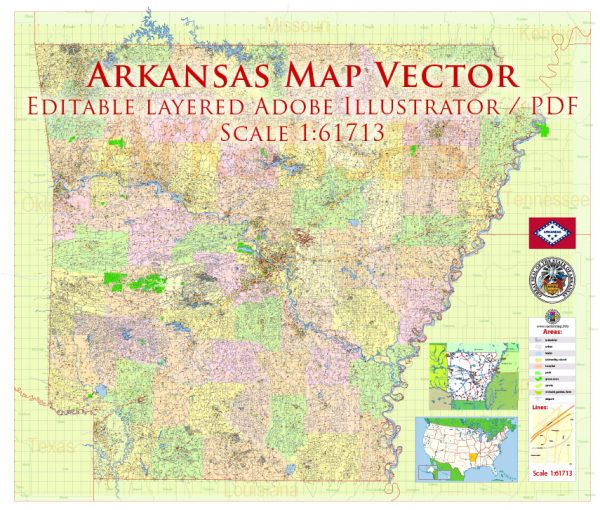The urban development history of Arkansas State, located in the southeastern United States, is marked by a combination of factors, including its natural resources, transportation networks, and economic activities. Here’s a brief description of the state’s urban development history:
- Early Settlement and River Transportation: Arkansas’s urban development can be traced back to its early settlement in the 18th century. The Mississippi River, along with its tributaries, played a vital role in facilitating trade and transportation, leading to the emergence of small riverfront communities like Little Rock and Fort Smith.
- Little Rock: Little Rock, the capital of Arkansas, became a focal point of urban development in the state. It was founded in 1821 and served as a transportation hub due to its strategic location on the Arkansas River. The city’s growth was further accelerated with the construction of the Little Rock and Fort Smith Railroad in the 1850s.
- Railroad Expansion: The late 19th century saw the expansion of the railroad network in Arkansas, connecting the state to the broader national rail system. This expansion spurred economic development and urban growth in cities like Pine Bluff, Hot Springs, and Jonesboro.
- Industrialization and Timber: The late 19th and early 20th centuries brought industrialization and a timber boom to Arkansas. Lumber mills and related industries flourished, leading to the growth of urban centers such as El Dorado and Texarkana.
- Urbanization in the 20th Century: The 20th century witnessed further urbanization in Arkansas as manufacturing, agriculture, and government services continued to play significant roles in the state’s economy. The growth of urban centers like Fayetteville, Springdale, and Rogers in the northwest part of the state was driven by agricultural processing and retail trade.
- Civil Rights Movement: Arkansas played a significant role in the Civil Rights Movement during the mid-20th century. The Little Rock Nine’s integration of Central High School in Little Rock in 1957 marked a pivotal moment in the fight for desegregation.
- Contemporary Urban Development: In more recent decades, Arkansas has continued to experience urban development, with Little Rock and Northwest Arkansas (including cities like Fayetteville, Bentonville, and Springdale) emerging as key economic and cultural hubs. The state has also witnessed growth in the healthcare and education sectors.
- Infrastructure and Tourism: Arkansas’s natural beauty and recreational opportunities, including the Ozark Mountains and Hot Springs National Park, have contributed to the state’s tourism industry. As a result, cities like Hot Springs and Eureka Springs have seen development driven by the tourism sector.
- Challenges and Opportunities: Like many states, Arkansas faces various urban development challenges, including infrastructure maintenance, education, and economic disparities between urban and rural areas. However, the state’s strategic location and diverse economic activities continue to offer opportunities for growth and development.
Arkansas’s urban development history reflects the interplay of economic, social, and environmental factors, making it a unique part of the broader story of urbanization in the United States.


 Author: Kirill Shrayber, Ph.D.
Author: Kirill Shrayber, Ph.D.